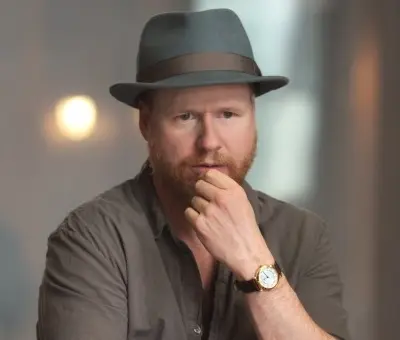If you've seen one Joss Whedon project, you've essentially seen them all
-

"You’ve also essentially seen a lot of work done by people who aren’t Joss Whedon," says Gita Jackson, who examines the many similarities in dialogue and characters throughout Whedon's career, from Buffy the Vampire Slayer to The Avengers. "Whedon’s work is clearly inspired by screwball comedies, which are dialogue-heavy and often derived from plays," says Jackson. "These are movies where characters stand around talking, because the comedy is based largely in dialogue. The pleasures of Arsenic and Old Lace come from the idea that Mortimer Brewster, played by Cary Grant, is clever enough to roll with the increasingly absurd punches. This style of dialogue, where information is delivered at a rapid pace, as back and forth quips, is essential to how Whedon writes character. In Buffy, you learn a lot about Buffy, Xander and Willow’s economic backgrounds based on how they talk. While Xander and Willow can have a complete conversation in references to nerd touchstones , Buffy uptalks, creates slang on the fly like 'slayage,' and typically sounds closer to a Valley Girl than the other denizens of Sunnydale. In fact, in the series premiere, Buffy shares more in terms of how she speaks with popular girl Cordelia Chase than resident nerd Willow Rosenberg. Given that a lot of this comes from movies adapted from plays, these lines are also often delivered in a casual, conversational tone, as if the characters are indeed the smartest in the room. It’s heightened dialogue in a heightened universe, but delivered with familiar and relatable inflections. These are the kinds of characters that match an audience of nerds’ self image, as the ones who may be low on the social totem pole but are smarter than their peers. This was a way of being a nerd that was popularized in the 1980s by movies like Revenge of the Nerds, where the jocks may be kings in high school, but the nerds end up on top eventually because of how smart they are." Jackson adds: "At his best, Whedon uses dialogue in the same manner as His Girl Friday and Arsenic and Old Lace—as a way to deliver information about characters, their relationship to each other, and how they think about the world and themselves. It’s why people end up memorizing their favorite lines from Buffy. I still think the way that Seth Green says 'Did anyone else just see that guy turn to dust?' when his character Oz sees Buffy slay a vampire for the first time is a miracle of comedic timing. At his worst, though, this mode of dialogue is not just incongruous with the story he is trying to tell; as a viewer you start to feel like the behavior of characters is dependent on the words Whedon wants to put into their mouths. In Avengers, Captain America and Tony Stark clash throughout the first third of the movie, which is primarily about people standing around in rooms talking to each other. Although their behavior is explained away by a science fiction phlebotinum, the ways in which Steve and Tony argue with each feels out of place...All of Whedon’s worst qualities as a writer come together in a phrase that my friend Meg coined long ago: It sounds like a writer wrote this. All things are written by writers of course, but some writers really want you to know that they are capital-W writers. It isn’t enough for Whedon to write a show about plucky space freelancers in Firefly—he must also have its finale reference Sartre. Overall, it makes the work feel tortured, laborious, and very clearly designed by someone. It’s like a funhouse mirror of auteurism, where the work has a highly identifiable authorial voice because everyone is talking like a clown. Because the point of the work is to showcase Whedon’s writing, it chokes everything else. The actors’ performances, the staging, the costuming, and especially in Avengers the craft of filmmaking itself grinds to a stop whenever a character is saying something the audience is supposed to hear."
TOPICS: Joss Whedon, Angel, Buffy the Vampire Slayer, Firefly
More Joss Whedon on Primetimer:- Nathan Fillion Defends Joss Whedon: 'I Would Work With Him Again in a Second'
- New Buffy the Vampire Slayer book delves into the abuse allegations against Joss Whedon with cast and crew
- Buffy the Vampire Slayer turns 25: The teen drama's legacy endures despite Joss Whedon
- Joss Whedon and Jeff Garlin deserve credit for being candid about their workplace misconduct
